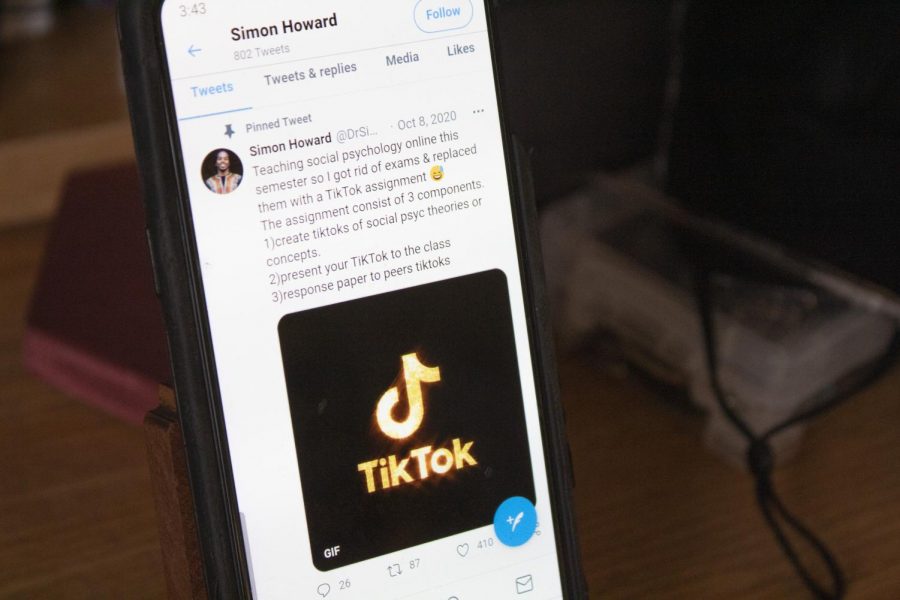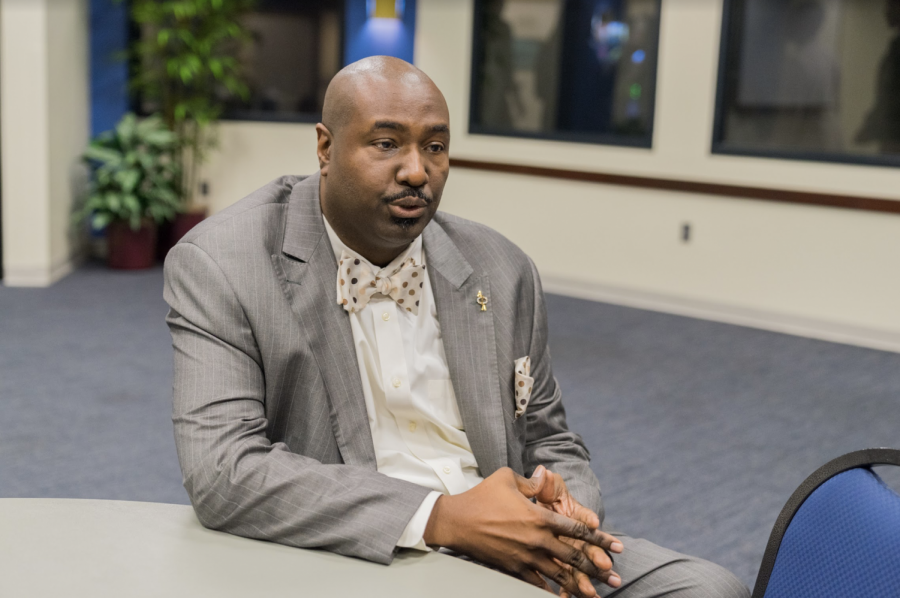Millions of users worldwide have the app Tiktok downloaded, which has content from all genres. Relatable videos with, or without text can be made that are three seconds to a minute long.
Simon Howard, professor of psychology, has used TikTok in his classroom previously and admitted that the first lockdown in Wisconsin inspired him to do so.
“During the lockdown, I thought about what assignments I would like to do if I was a student taking my class,” Howard said. “Additionally, if I had assigned a TikTok assignment for class, I would feel justified downloading TikToK app for the quarantine rap I wanted to post”
Additionally, Howard wanted a new way to present content to students since classes were online.
“Now that we are on this online format, I thought ‘what could I do to keep people tied in,’” Howard said. “Also, I wanted to find a way in which people are going to be able to interact with one another.”
Charlene Soltes, junior in the College of Health Sciences, said that the assignment given to the students placed in groups was to create content for one another, in which each group would demonstrate their knowledge of social theories discussed prior in class.
“The videos were humorous, creative, and relatable,” Soltes said in an email. “I think the relatability of the videos effectively demonstrated just how commonplace social psychology is in our everyday lives.”
Dani Rockett, junior in the College of Health Sciences, said that the TikToks that the students created enhanced her learning.
“Dr. Howard’s powerpoints and discussions served as great assistance with learning the content and creating our own Tik Toks because he gave various real world examples of the concepts covered in the class and even made a Tik Tok of his own in order to help students be more innovative, creative and specific with the assignment,” Rockett said in an email.
Howard explained why he made the students create their own Tiktoks.
“This gives students an opportunity to be producers of knowledge themselves, unlike taking an exam which can be very passive sometimes,” Howard said. “Using something like Tiktok when you have students create, or produce their own content it can lead to a much deeper level of learning.”
Soltes explained how the feedback from students was positive.
“The students’ Tik Toks made the concepts easier to remember and helped foster collaboration within the groups,” Soltes said in an email. “I think a lot of the students preferred this method of learning, as we were given creative freedom with minor guidelines to follow.”
Howard said he noticed a difference in the students ability to be more engaged with the content presented in class.
“A majority of the students really enjoyed the assignment and they had fun doing it,” Howard said. “They were much more engaged and took a more active role in their learning compared to other assignments.”
Rockett explained how she thinks more professors should include the app in their classroom.
“It allows students to be creative and use a very popular social media platform for educational purposes. Tik Tok could offer more opportunity for students to remember information from the class, rather than the traditional learning/teaching approaches,” Rockett said in an email.
Howard said that the feedback from Marquette faculty has been all positive. “The people that have contacted me have only given me positive feedback,” Howard said. “They have talked about how innovative the assignment is and have asked me for permission if they can use the assignment in the classes that they teach.
This story was written by Natalija Milesunic. She can be reached at natalija.milesunic@marquette.edu



